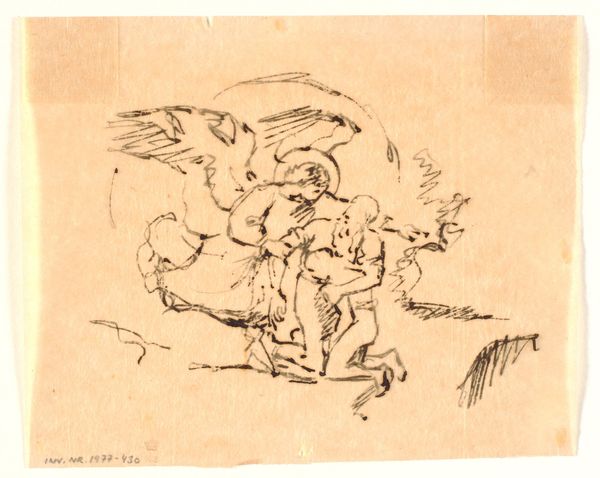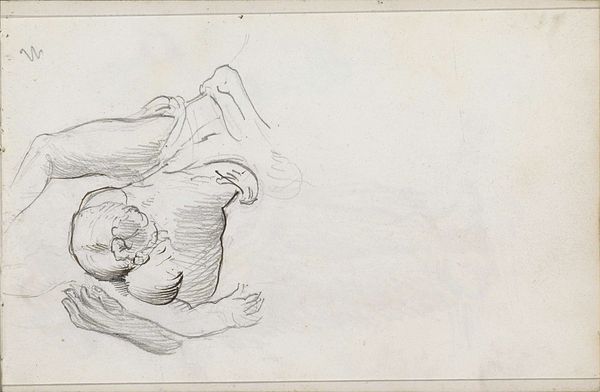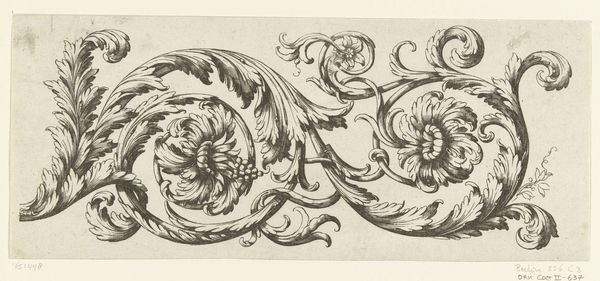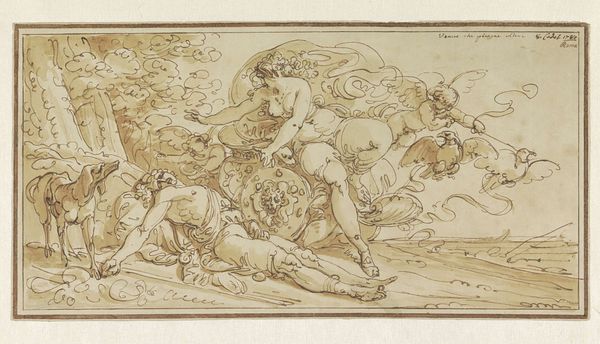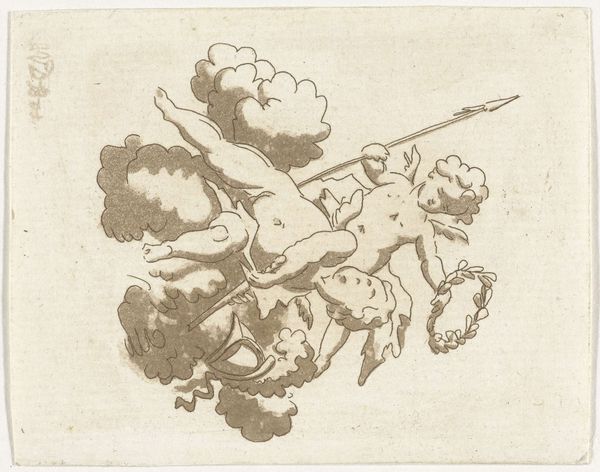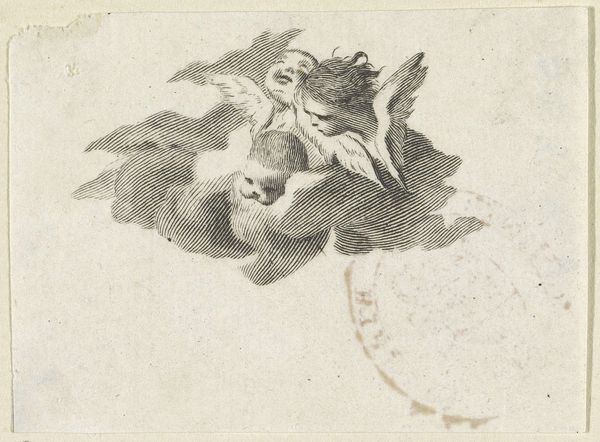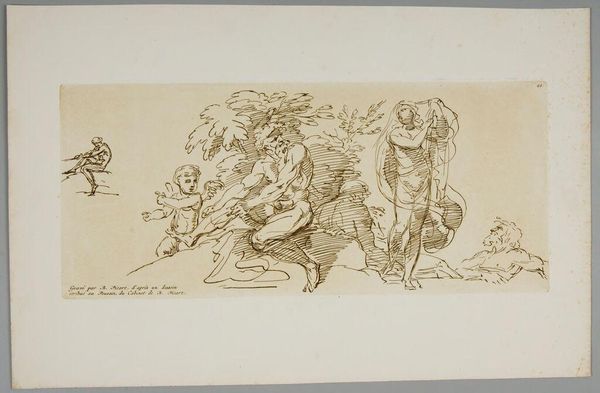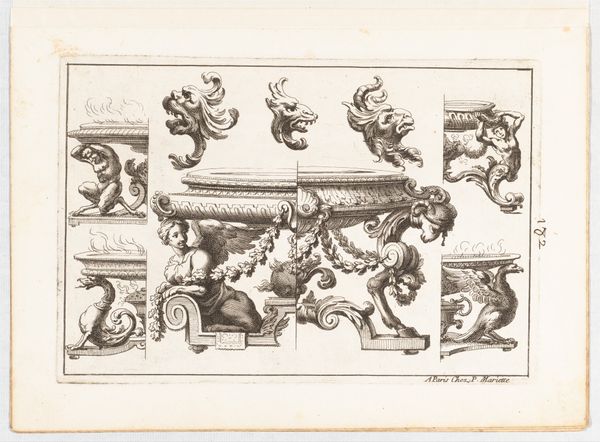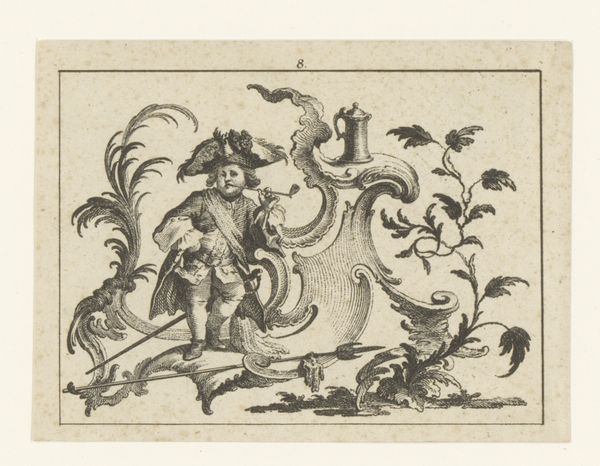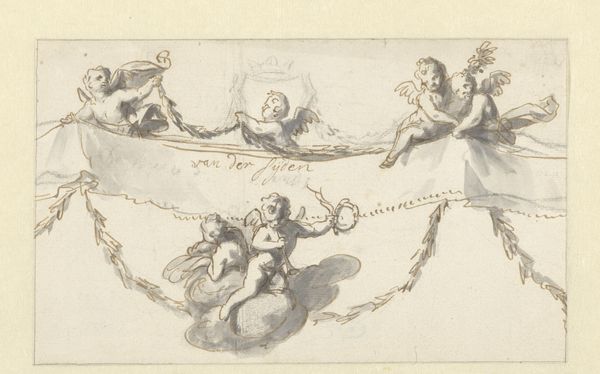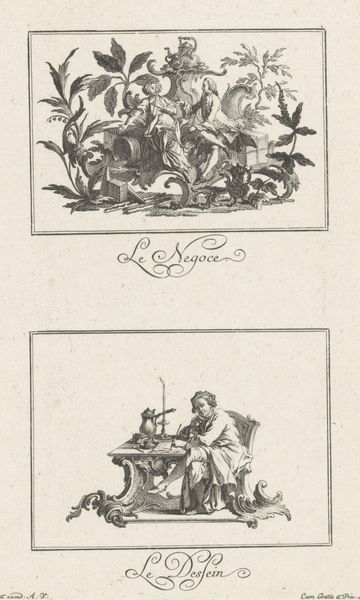
drawing, ink, pen
#
drawing
#
neoclacissism
#
allegory
#
pen sketch
#
ink
#
ink drawing experimentation
#
geometric
#
pen work
#
pen
Dimensions: height 62 mm, width 195 mm
Copyright: Rijks Museum: Open Domain
Curator: Welcome. We are looking at a drawing entitled “Fries, samengesteld uit acanthus-ranken”, or "Frieze, Composed of Acanthus Tendrils," attributed to Henri Sallembier. The Rijksmuseum dates it somewhere between 1763 and 1820, placing it firmly within the Neoclassical period. Editor: My first impression is that it's remarkably intricate. There’s a delicate, almost airy quality to the linework. I can almost feel the artisan's touch just by looking at it. Curator: Indeed. Sallembier’s mastery is evident in how he employs the pen and ink to create depth and texture, observe the meticulous rendering of the acanthus leaves. Their placement guides the viewer's eye across the entire composition. It epitomizes neoclassical ideals—order, balance, and clarity. Editor: But how was this made? One thinks of the laborious craft involved. Were assistants employed? And how many attempts? We only see this "final" outcome, not all the sweat equity embedded within. Curator: Good question. It would require considerable time and training, for one, and the inkwork experimentation demonstrates it was meant for transfer to a larger architectural scale or to serve as an inspirational piece for a more elaborate project. Look at the central allegory with intertwined lovers and a cherubic figure with geometric instruments, all embedded within plant growth: this would imply deep material investment into culture making. Editor: Absolutely. It pushes against modern conventions where 'design' can sometimes happen away from materials. Also, observe that slight blurring. Are the imperfections also part of what makes this so compelling? Curator: Precisely. It brings that human dimension to a classical motif often seen as cold or distant. By bringing the human element, especially with the drawing's freehand feel, it’s infused with a life of its own. Editor: It makes me reflect upon this idea of the Gesamtkunstwerk, or “total work of art." Even at this initial stage of conception, it presents something with total potentiality. Curator: The scale of the work reminds us how deeply these classical forms were integrated into every aspect of life and society, and in the end, how we see the legacy of labor within Sallembier’s technique itself. Editor: Right, making this encounter more than a visual study, but also, one could suggest, an echo of production.
Comments
No comments
Be the first to comment and join the conversation on the ultimate creative platform.
